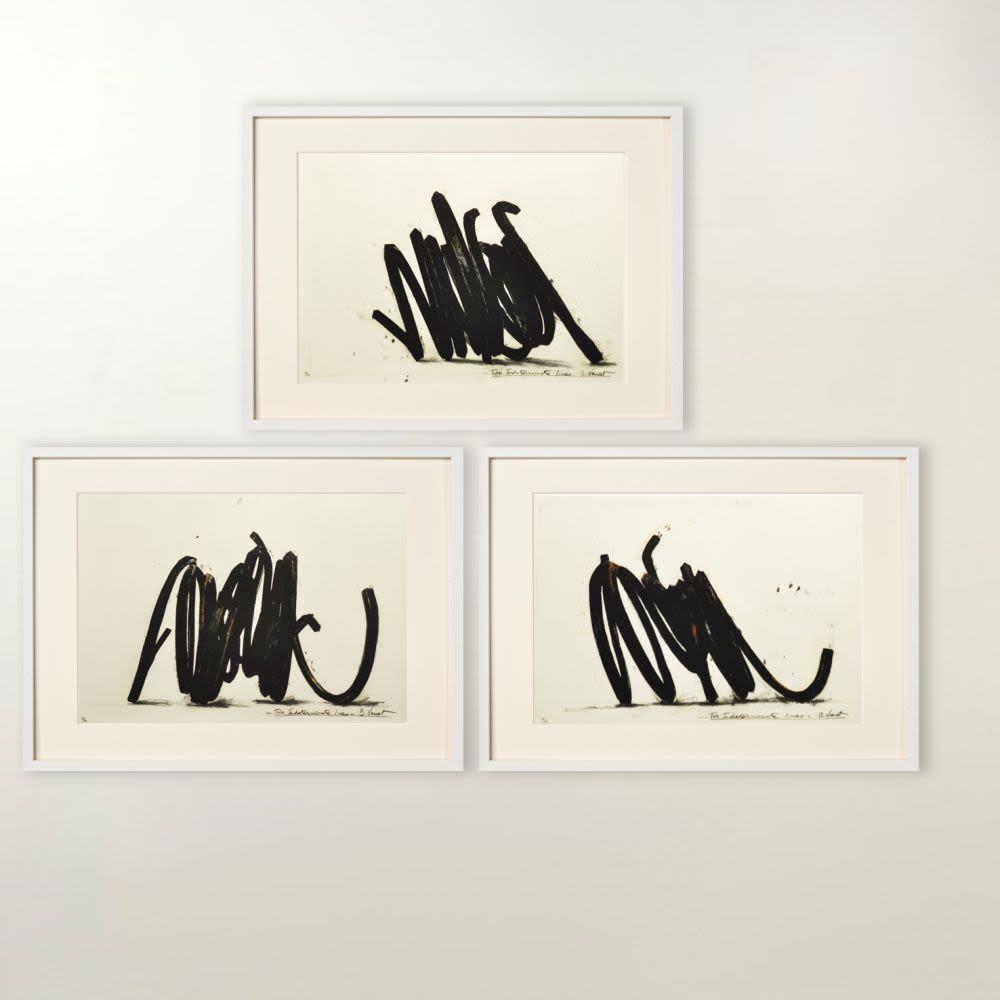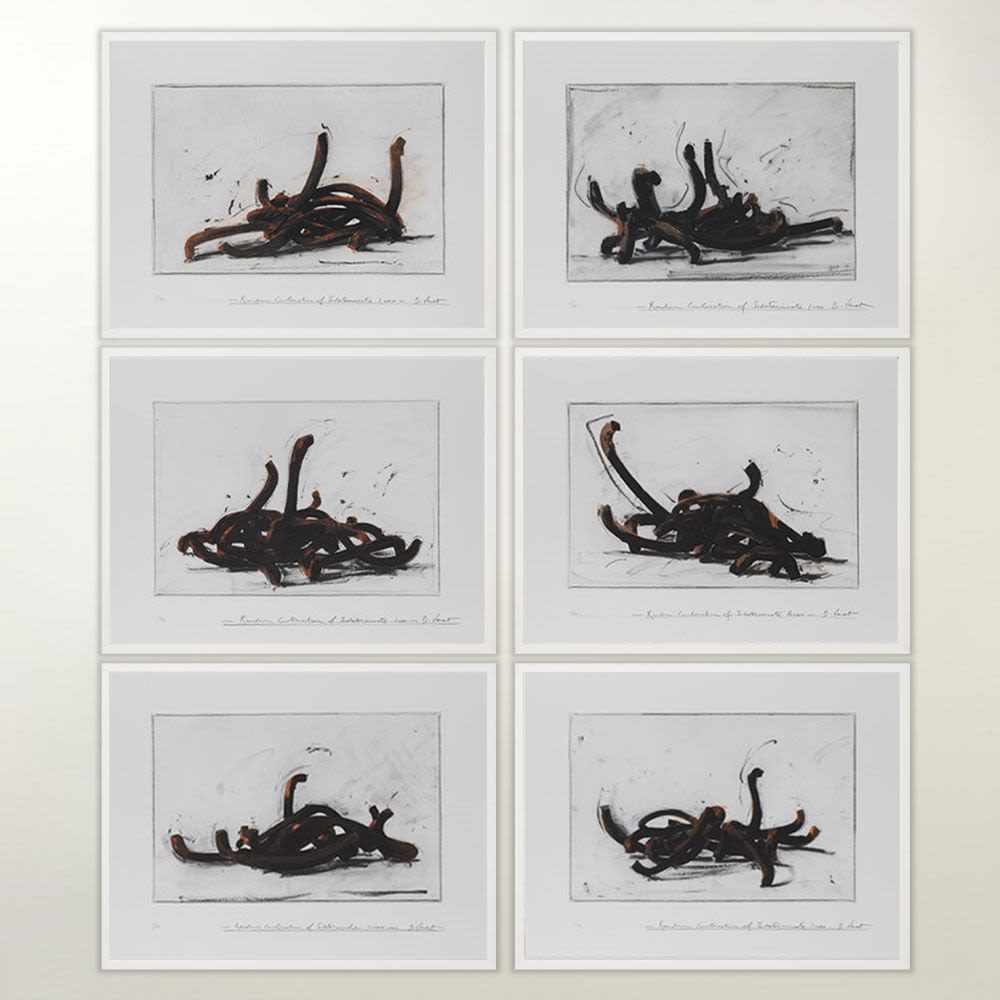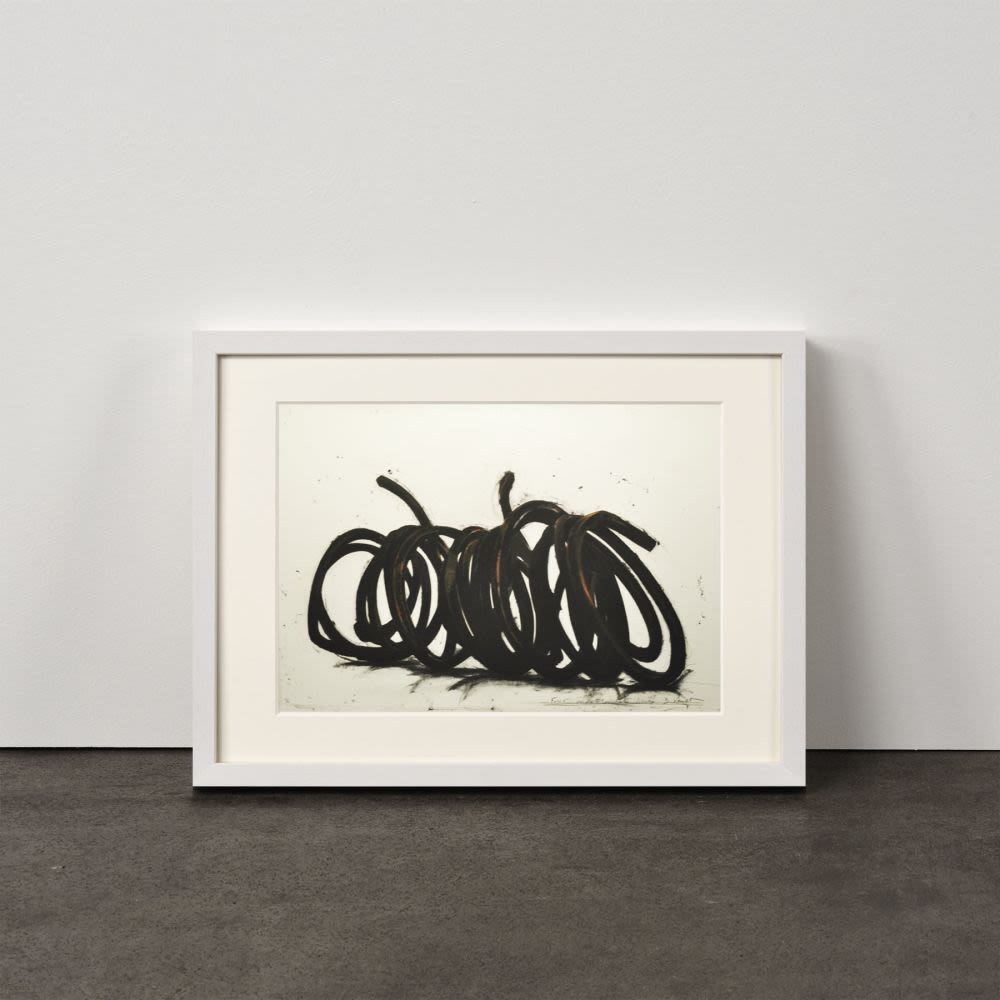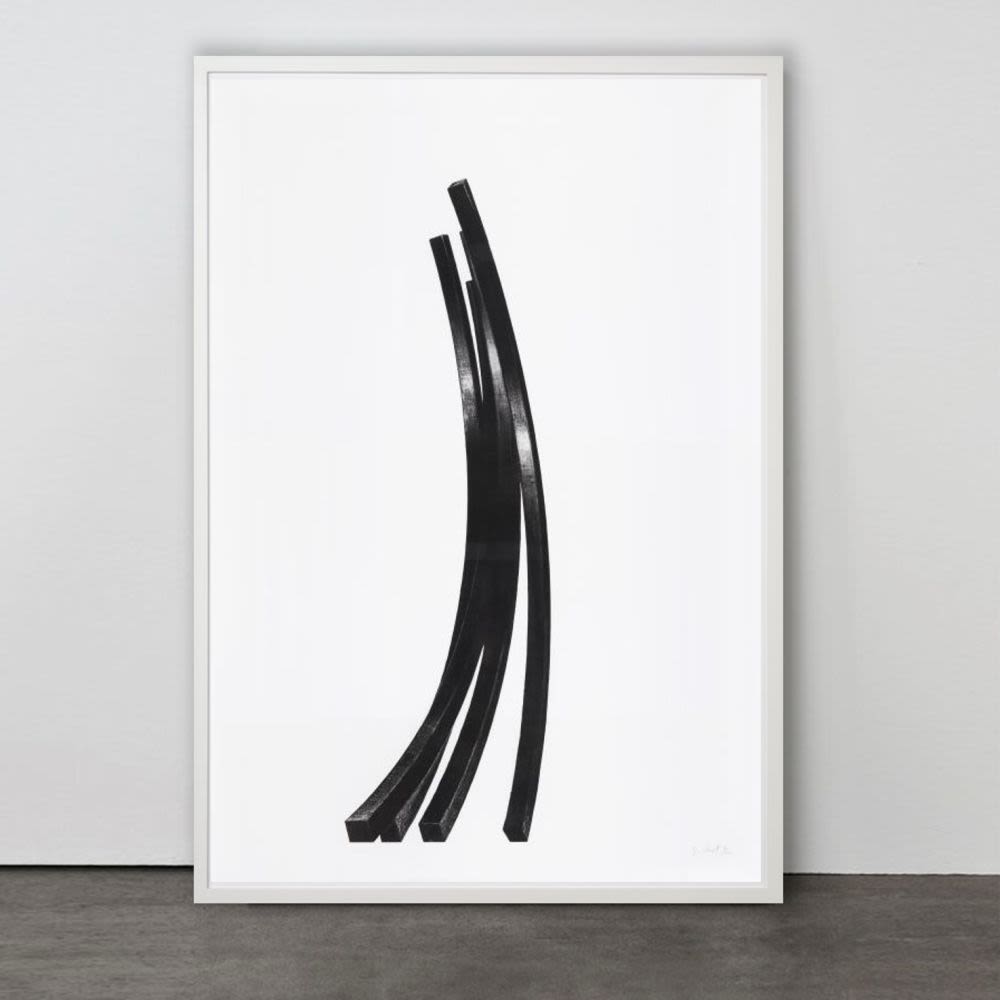Bernar Venet
Bernar Venet became interested in painting and drawing at a young age. In 1958 he started to study at the municipal art school in Nice and got his first job in 1959 as a stage designer at the Nice Opera. At the same time, he was immersing himself in painting, drawing, and photography. Successively, Venet became familiar with the works of Nouveau Realism, Pop Art, and Minimalism. In 1971 he broke off his artistic activities to devote himself to theory, and to teaching art as well as art theory at the Sorbonne in Paris. After his academic activities, in 1976, he did not return to his former monochrome tar paintings but started to create wooden reliefs and freestanding steel sculptures called Arcs, Angles, and Diagonals. In the same year, as a result of his preoccupation with physics and mathematical phenomena, he focussed on the line as the subject of his work. As early as 1977 one of his sculptures was exhibited at the Documenta 6 in Kassel. The line was the starting point of his sculptural expressiveness. Meanwhile, his three-dimensional works did not simply follow the law of abstraction and minimalism but were based on concepts of disorder, instability, and uncertainty. The basic idea from his beginnings as an artist is still present in his work today. He worked and works on the concept behind an artwork, not just on its visual aspect. His enthusiasm for the physical and mathematical principles of time, space, and action in relation to the line guided him to the invention of these magnificent and conceptual sculptures which marked a significant turning point in his career and have changed the face of contemporary art.
“ Making something that is already understood and accepted by the art world is boring. „










